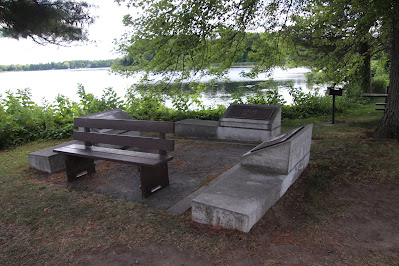St. Andrew's Presbyterian Church occupies the southwest corner of Wellington Street and Kent Street.
The statue shown below is titled, 'Whatsoever,' and is detailed in another post on this site. To view it, click here.
La statue présentée ci-dessous est intitulée « Whatsoever » et est détaillée dans un autre article sur ce site. Pour le voir, cliquez ici.
St. Andrew’s Church
The first St. Andrew’s kirk, erected here in 1828 by masons who built the Rideau Canal, was demolished in 1872. The present church, designed by W. T. Thomas, was built 1872-74.
National Capital Commission 1967
L’église St. Andrew’s
La première église St. Andrew’s construite ici en 1828 par les maçons du canal Rideau, fut démolie en 1872. L’église actuelle fut érigée en 1872-74, d’après les plans de W. T. Thomas.
Commission de la capitale nationale 1967
1872–1874
ST. ANDREW’S PRESBYTERIAN CHURCH
This Gothic revival church was designed by William Tutin Thomas of Montreal, one of Canada’s most significant architects of his generation. It replaced an earlier church built when this parish was established in 1828.
Designated Heritage Property
1980
City of Ottawa
1872–1874
SAINT ANDREW’S PRESBYTERIAN CHURCH
Cette église neo-gothique est l’œuvre de William Tutin Thomas, de Montréal, un des plus importants architects de sa génération. Elle remplace l’église construite au moment de la foundation de la paroisse en 1828.
Bien Designé Historique
1980
Ville d’Ottawa


















































